
Korean connection with ayodhya and lord rama
After devotees of lord ram, it is the Koreans who seems to have a deep interest in Ayodhya-birth place of lord ram. Korean believes themselves to be the descendant of a princess "Heo Hwang-ok" who came to Korea from Ayodhya.
What the legends say?
According to Sam Kuk Yusa(meaning “History of three kingdom”), the ancient history book of Korea written in 11th century AD, There was a kingdom in south Korean peninsula ruled by seven elders but no king. They prayed to god for a king and one day, they heard AkashVani(voice form sky). For the king to arrive, The voice instructed the Korean citizens to go on top of a mountain, dance & sing prayers. They did as instructed and there came the lightning plum colored cord from heaven. On one end of the cord was a gold chest and when they opened it, they found six golden orbs.
Kim Suro was born and elders think about his marriage
Nine elders brought that golden chest home and when they opened it the very next day, they found a baby boy instead of golden orbs. Boy grew quickly up to 9 feet and on the auspicious day of poornima(Full moon day), he was named as Kim Suro (Kim means gold). Very soon, he built his own palace and administered his kingdom from the palace. When nine elders offered him a bride, he flatly refused saying that I am born from heaven, and so, let the heaven decide about my marriage.
Then came the Indian princess from Ayodhya
From India, came the 16 year old princess of 'Ayuta' (Ayodhya). Her family name "Huh" was renamed as "Hwang-ok" (yellow jade) in Korea. Indian princess "Heo Hwang-ok"(Korean name) travelled by ship with treasures and gifts, along with her brother Po-ok(Korean name), to marry Korean king Kim Su-ro, the king of Karak Kingdom in year 48 AD.
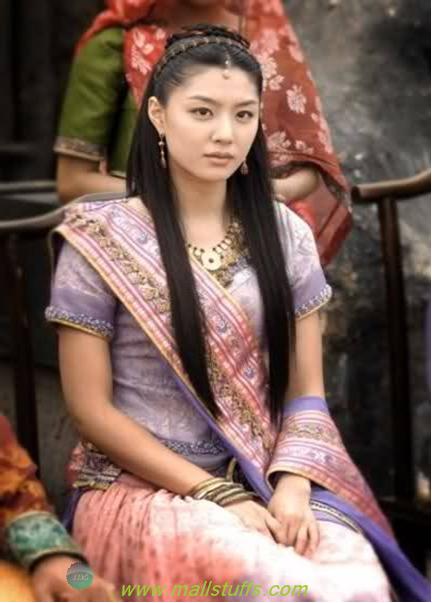
Korean actress playing the role of ‘Heo Hwang-ok’
Princess father in his dream received the revelation of her daughter marriage with king of karak kingdom. Karak kingdom was under the rule of ancient Gaya Kingdom. On receiving this revelation, he immediately sent her daughter on a long sea voyage to karak kingdom in South Korea.
Enchanted by princess beauty, king Suro marries her
King suro, himself received the princess delegation, all of them standing 7 feet tall. This should not surprise since the king suro himself was 9 feet tall. He was mesmerized by her beauty and smiling face. She was the one he always dreamt of. His happiness crossed all bounds when he heard the princess proposal for marriage especially because she came from the royal Gaya dynasty, the sacred place where Lord Buddha was enlightened.
Story of King suro and Indian princess Heo Hwang-ok’
In Sam Kuk Yusa,the narration from the princess is stated as "In May this year, my father and mother said, We had a dream last night, in which we saw a God who said, �I have sent down Suro to be king of Kaya. Suro is a holy man, and is not yet married. So send your daughter to become his queen'. Then he ascended to heaven. My daughter, bid farewell to your parents and go".
Reacting to princess proposal, king suro immediately said “She is the one I have always dreamt of. She is the one sent from heaven for me”.
King suro construct a memorial for queen ‘Heo Hwang-ok’
After his marriage with the princess, he constructed a grand temple at the place of their first meeting. Located in Kimhae, can be found a stone pagoda in front of princess tomb.
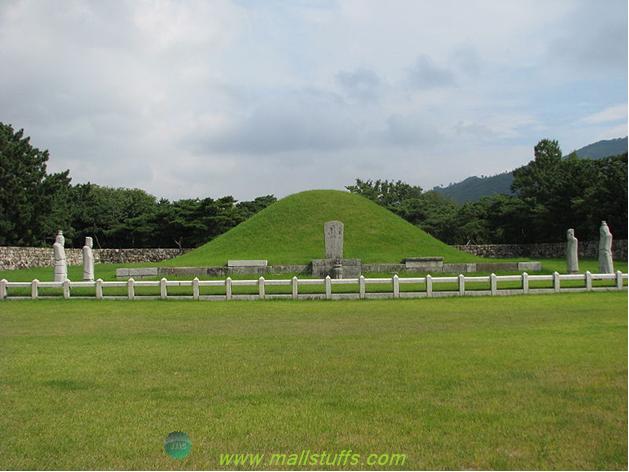
Tomb of Ayodhya princess Heo Hwang-ok in kim hae city, south korea
This Pisa Stone pagoda, known as Chimpungtap (Wind Calming Pagoda), is said to be of built up of stones brought from Ayodhya by princess Heo Hwang-ok. Engraved with red patterns, this stones are said to have the magical power of calming stormy seas.
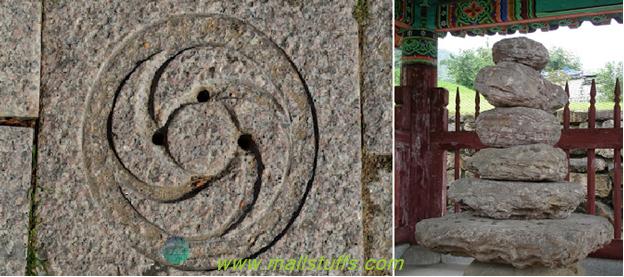
On right hand side is the pagoda made up of stone brought by princess from Ayodhya to appease the water god ‘Varuna’ and on the left side, you can see Indian symbol swastika depicted as fish on the stone
Powerful clan of King suro and princess ‘Heo Hwang-ok’
She gave birth to ten sons plus two daughters and the clan that descended from her and Korean king Suro, is known as "Kim-Hae-Kim" clan, the most powerful dynasty of South Korea.
Today, 8 million of the Korean population, forming up to two third of Korea total population, trace their origin with king suro and claim themselves to be the 72th - 77th descendant of king Suro dynasty. This excludes the population that stays in North Korea. Today, this clan is one of the most prosperous, largest and notable of all South Koreans with many presidents and premiers belonging to this clan. Members of Heo lineages (including the clans of Hayang, Gimhae, Yangcheon(Gongam), Taein and the Gimhae consider themselves to be descendants of King Suro and ayodhya princess ‘Heo Hwang-ok’.
Korean first lady ‘Kim Yoon-ok’, Former President, "Kim Dae Jung", former Prime Minister "Heo Jeong" and Prime Minister "Jong Pil Kim", are some of the notable members of this clan.
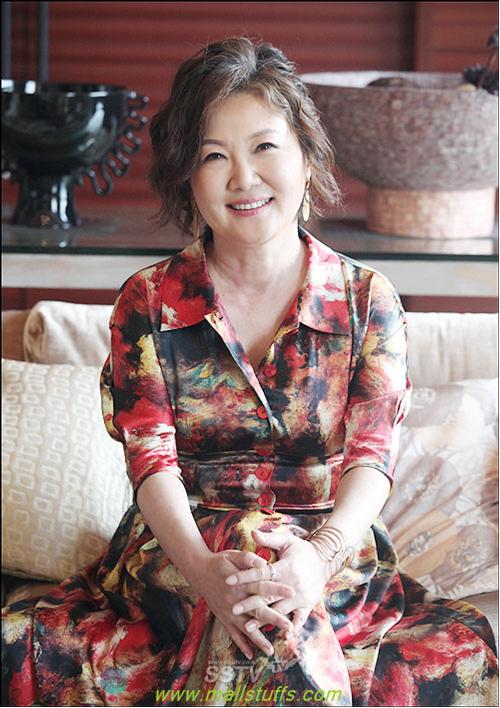
Actress Kim Hae Sook, 77th descendant of king suro dynasty
This also reminds me of PSY, the most famous rapper, whose YouTube video crossed 1.8 billion views, is the son of Park Won-Ho, chairman of DI Corporation. His mother, "Kim Young-hee", who owns several restaurants in Gangnam, is the descendant of king suro and princess ‘Heo Hwang-ok’
PSY ‘Gangnum style’ crossed 1.43 billion views
Historical Evidences of ‘Heo Hwang-ok’ connection with India
One of the historical evidence is the story from "Sam Kuk Yusa", which I told above. Another Historical evidence is the document called “Record of a Journey to the Five Indian Kingdoms”. King Asoka (Descendant of lord Rama) transported 30,000 pound of gold and 57,000 pounds of yellow iron to king Chinhung of Korea to mould a beautiful image of Buddha. This was the rise of Buddhism in Korea. King Asoka also sent Buddhist monk to Korea to spread the message of peace and non-violence. Thus India first export to this island country (Where the sun rises first) was not tea, rice or coffee, but a whole cultural package including spirituality. As a result, Korean vocabulary absorbed many Sanskrit concepts and words like 'Narak'(Hell), 'Stupa'(Statue), 'Brahma'(deity of creation), 'Indra'(deity of heaven), 'Bhikuni' 'Nidana' etc.
Commenting on historical evidences, Former Korean ambassador Parthasarathi said “It was a time when gods used to appear and lots of things happened. What’s more important than what is reality is what could be.”
He also spoke of the monk Jangyoohwasang, the brother of princess Heo and the construction of the temple known as Chilbul Temple, or “The Temple of the Seven Buddhas,” by King Su-ro to commemorate seven Korean Buddhist monk attaining Nirvana. He believed the Buddhism to Korea came from the princess Heo of Ayodhya, which was known as Great Gaya dynasty, after the enlightenment of Buddha. Buddhism was later elevated to a new level by mauryan king ‘Asoka-the great’.
Genetic Evidences of ‘Heo Hwang-ok’ connection with India
According to genetic study done by Korean scientists, myth of the Indian princess marrying South Korean prince is certainly true. Genetic study of DNA samples from the site of two royal gaya tomb at Gimhae tomb, South Gyeongsang Province, reveals the genetic link between ethnic Korean and ethnic groups of Ayodhya. Their initial research was on focused on the mitochondrial DNA in the human remains.
Note: Mitochondria are cellular components that are the source of power for animal and human cells and have DNA which is passed to succeeding generations through the material line. This transmission makes such DNA valuable in studying family evolution
They have Indian royal DNA and this is the reason why descendants of kim-hae clan are very beautiful and have superior brains compared to other Korean clans. Also, their nose is less flat compared to other Koreans who came from japan and china.

Kim Tae Hae, south Korean actress, who got best female artist award in 2009.
Archeological Evidences of ‘Heo Hwang-ok’ connection with India
According to Sam Kuk Yusa, Princess Heo Hwang-ok on his voyage to South Korea carried a stone which calmed the waters. This stone is not found anywhere else in the world except the kingdom of Korea and Ayodhya. This stands as a crucial evidence of the stone coming to Korea from Ayodhya. This reminds me of the floating stones of ram setu which calmed the ocean waters of rameshwaram.
Check below link
Floating stones of Shri Ram Setu
Residents of kimhae are over the moon to find their connection with lord rama and they have intensified their research on this connection. They found one more evidence, symbol (Two fishes kissing each other) of Kaya kingdom matches with the cultural symbol of royal family in ayodhya. Very proud of their ancient heritage, they often boast the story of king suro and princess hwang ok publicly.
Below is the video
King kim suro and Princess hwang ok
In 2010, National archaeologist and professor from Korea ‘Byung Mo Kim’ visited Ayodhya for the fifth time to gather more evidence. On being invited by state government Ayodhya Shodh Sansthan, He presented a slide where the historical evidences of cultural association between the countries were disclosed. Though his slide, he exclaimed "The queen of Korea's biggest dynasty Hoh was the daughter of Ayodhya and in that manner, Ayodhya is like our mother city. Princess Ho travelled by sea route and married King Kim Suro of Kara dynasty. He was the first king and the entire Kara clan, which comprises over about two-third the population of Korea are its descendents," said Prof Kim.
The twin fish, which is the state symbol of Uttar Pradesh and is found on almost all the ancient buildings of Ayodhya, is the biggest clue to the link and the route undertaken by Princess Hoh, says the professor. "I have pictorial evidences. Twin fish symbol can also be seen in ancient buildings in Nepal, Pakistan, China and Japan and the gate of royal tomb of King Suro in Kimhae city in Korea," said Prof Kim. "For the last 40 years, I have been tracing the route taken by the princess between Ayodhya and Kimhae city and after five visits; I have all the evidence to culturally connect the two cities. Through these visits, we are making attempts to talk to the Uttar Pradesh government to open up their doors for strengthening cultural relations between the two countries," said Prof Kim.
Princess set the trend of tea cultivation in Korea
Further the book ‘Sam Kuk Yusa’ says, she brought a pot of tea from Ayodhya which was cultivated to form a spiraling tea garden of Korea. This marked the trend of tea cultivation in Korea. She is said to have died at the grand old age of 159.

Korean women in tea fields of korea
How much the Princess Heo is to the Koreans?
Queen Heo’s importance in Korean culture can be predicted from the fact that her union with king suro was beautifully depicted in the opening ceremony of Busan Asian Games. Theme called as "Beautiful Union," celebrated the union between "Huh Hwang-ok" and King "Kim Suro", was meant to symbolize the unity and hopes of the 3.6 billion Asian people.
What the Korean claims?
By saying that their princess came from India, South Koreans are indirectly making the following claims
1) They are descendants of lord Rama-the valiant and righteous king of ancient times
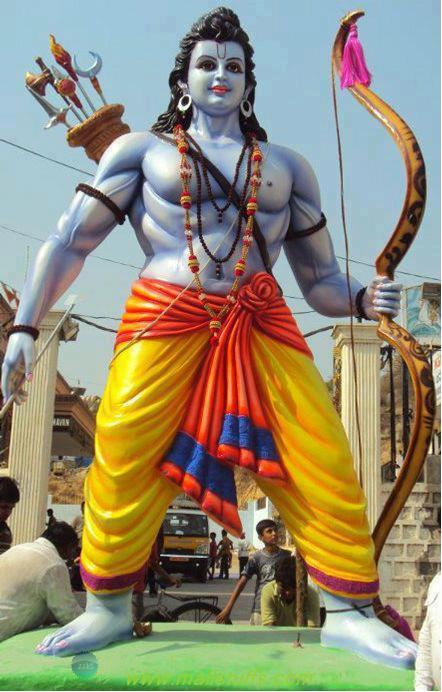
Lord Rama, the righteous and courageous king of all times(even arnold will be jealous seeing such a physique)
2) They are descendants of Lord Buddha who attained nirvana (Salvation) in gaya. Before abandoning materialistic pleasures at the age of 29, Buddha was married and had one son.
3) They are descendants of King Chandragupta or King Asoka-The greatest king of modern times. Western world to prove their dominance, usually praise Alexander as best of all kings, but the same Alexander pissed in his pants, when he saw the mighty porus army along with the army of mauryan kingdom. I shall come with an article on how Chanakya, the greatest diplomat and spiritual teacher of all times, singlehandedly defeated Alexander and his mighty army and made him run back to Greece.
How this Korean Ayodhya connection started?
Though it is not known who the king of Ayodhya was 2000 years ago, the Korean delegation believes they were the ancestors of Mr.Bhimlendra Mohan Pratap Mishra. The legend of Ayodhya princess marrying king suro prompted Kim Jong-Pil to invite Mishra of Ayodhya royal family for the memorial ceremony. Dated March 1999, Kim Jong-Pil wrote "Being the 72nd-generation descendent of king Suro of the Kaya kingdom, I would like to invite descendants of the Ayodhya royal family to the memorial ceremony for King Kim Suro to be held this spring. The Koreans regard Mishra as the descendent of Hwang-Ok because his family, like the Kaya royal family, has two fishes as the insignia.”
Mishra found this Korean story little hard to believe since he knows his family lineage up to 10 generations only. According to mishra, his family is traceable up to Sadanand Pathak, a landlord in Bhojpur, Bihar. Gopal Ram, son of pathak, migrated to Ayodhya in the late 17th century. Koreans, who acknowledge Hwang-Ok as the ancestor of Mishra's family, were obviously not impressed with Mishra's lack of knowledge about his family lineage. However, Mishra accepted the Korean gratitude and is pleased about the fact that this association will bring development and prosperity to the historical city of Ayodhya. He accepted the Korean invitation and was honored an electrifying reception by the karak clan society in South Korea.
Mayors of Kim hae and Ayodhya signed sister city bond
In May 2001, after almost 2000 years, Mayors of "Kim-Hae" City and Ayodhya signed a Sister City Bond commemorating their ancestral relationship. BM Kim, a descendent of King Suro, granted 2 billion rupees to renovate and improve the infrastructure of Ayodhya plus build the monument after princes HEO. A monument was constructed on the banks of river saryu(Birth place of lord Ram) in the memory of Ayodhya born Korean princess "Heo Hwang-ok".
Queen Heo, First empress of korea
District administration of faizabad(Ayodhya) assisted the Koreans by providing the land for the memorial and also the assurance of guarding the memorial. More than hundred government representatives and historians from both sides inaugurated the memorial on the west bank of River Saryu. To build this monument, special three meter high stone, weighing 7,500 kg, were shipped from South Korea and expert Korean technician and architects were summoned to construct the monument in traditional Korean style. Descendants of Kim-Hae-Kim clan regards this monument as their mecca(a place of pilgrimage) and millions of south Koreans visit Ayodhya annually. "Bong Ho-Kim", president of powerful "Kim-Hae-Kim" clan society said: "Ayodhya being birthplace of our great Queen Huh, has acquired the status of a place for pilgrimage to over nine million descendants." According to "Bong Ho-Kim", Korean owes their success and prosperity to queen Huh of Ayodhya. Indian delegation was also very grateful to the Korean delegation for honoring ancient princess born in Ayodhya.
Princess ‘Heo Hwang-ok’
Shailesh Krishna, UP's cultural affairs secretary said "Be it the president, prime minister or even the local mayor, each one of them has their roots in the Kimhae Kim family". Another member said “the protocol aimed to encourage cultural or social activities like exhibitions and fairs that would help the people of both the countries to get to know their cultures more closely."
Strong cultural and bilateral ties with Korea
In 2005, Korean government invited the UP cultural and tourism department to their international festival marking the 2000 years of Ayodhya princess arrival to Korea.
To further strengthen the relationship, President Lee myung bok was invited as a chief guest in repunblic day parade at new Delhi.
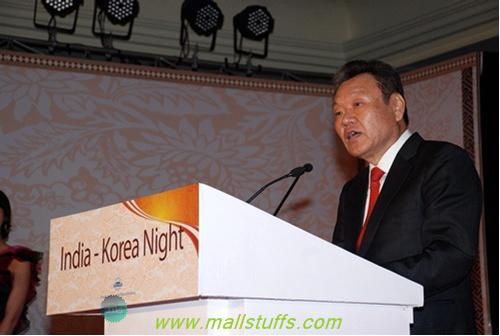
India-Korea cultural meet
South Koreans do not have any mineral resources or oil deposits. Still, it is one of the most developed nations of Asia with GDP per capita of $32,431, eight times more than India. One of their remarkable achievements is transformation from a developing country in the 1950s to a high-income country with a substantial per capita income within 5 decades. Samsung (World largest mobile company), posco(World Fourth largest steel company), LG(World Second largest television company) , Lotte Group, Hyundai, Daewoo, Doosan, are some of the famous Korean companies operating in India. South Korea is the 4th largest investor in India with trade exceeding $25 billion and expected to cross $40 billion by 2015. In July 2012, India purchased eight warships and other military arms and equipment from South Korea. Companies like Hyundai, LG and Samsung have opened their manufacturing plants in Haryana, New Delhi and other regions of India. Indians (Especially from royal family) are well known for their wit and intelligence (IQ) and now, I can understand now why South Koreans are so intelligent and prosperous, all thanks to the Ayodhya princess.
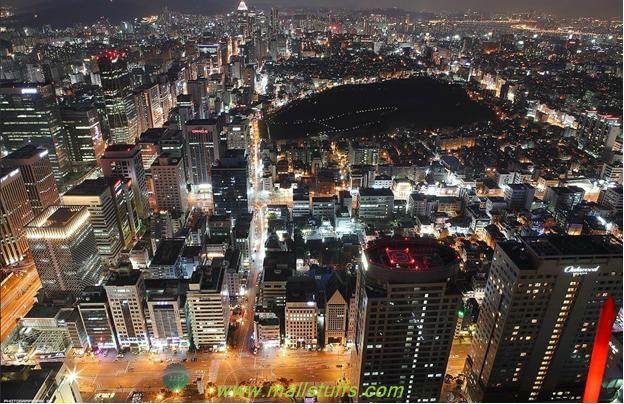
South Korea, one of Asia’s most developed nation
Conclusion
King Kim Suro is a Korean hero, for both South Koreans and North Koreans. It is very sad that due to some narrow minded politicians, South Korean cannot join hands with their brothers from the North. South Koreans are very proud of their ancient relationship with India and we Indians should also be proud of our South Korean brothers. May lord ram bless grace and peace to our South Korean brothers. (Haha...Indians need more blessings than they do)
Jai Shri Ram
Note: Images used on this website
are either a production of Bhaktivedanta Book Trust(https://www.krishna.com), Iskcon
Foundation or were found in google search under "Free to use and share". If any
of the images presented here violates copyright issues or infringes anyone copyright
or are not under "Fair use", then please bring it to our notice. Read
Disclaimer for more.
Share this to your friends. One of your friend is
waiting for your share.
Related Articles
Origin of word Hindu
Meaning of word Bihar and why bihari is proud of their culture and origin
Why arvind kejriwal and aam aadmi party may fail in future
Bhagavad Gita Poetic Translation-Text 5
Ram Chahe Leela-Goliyon ki rasleela english poetic translation with hindi subtitles
Why homosexuality is dangerous for Indian society
Swastika good luck coins of american recreation industry
Bhagavad Gita Poetic Translation-Text 1
Bhagavad gita Chapter1, verse 2, english and hindi poetic translation with teachings
Example of historic examples against present caste based system
Post Comment